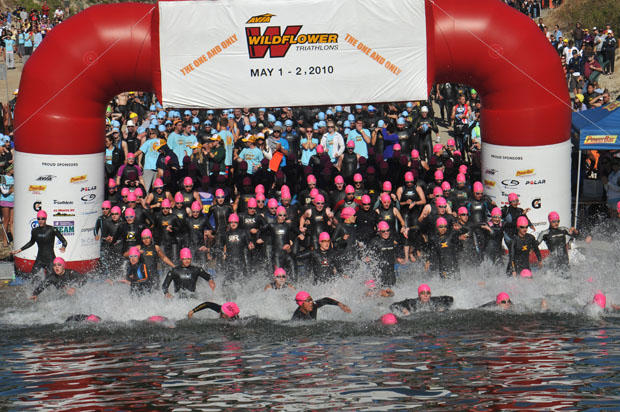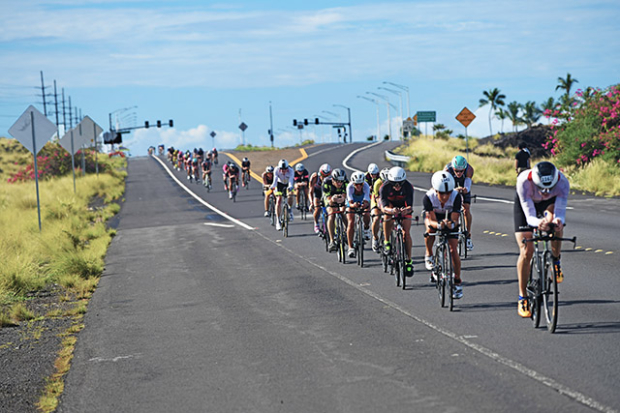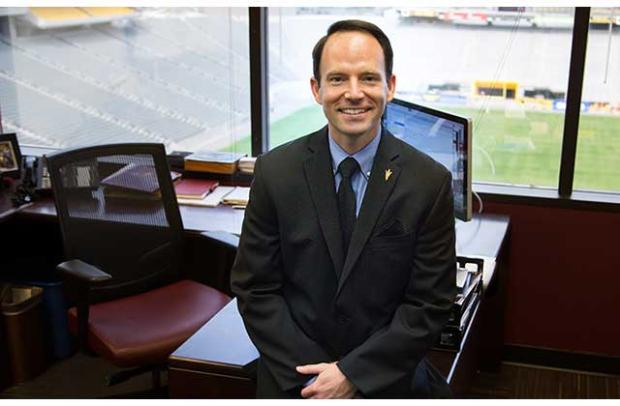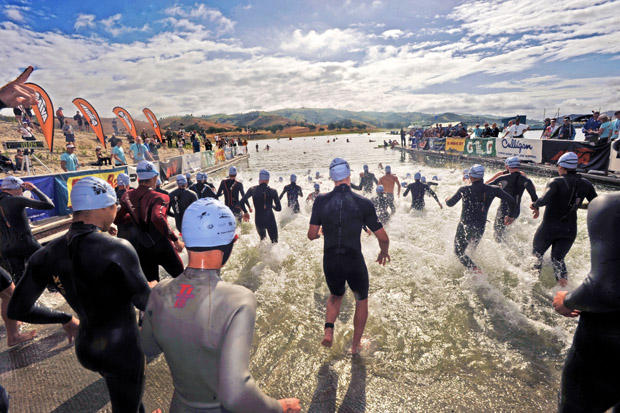USAT to Invest Overages During 2019
America’s national governing body for triathlon, USA Triathlon or USAT, announced an investment program today, “beginning with reinvesting $1.9 million in profit from fiscal year 2017 into key programs and emerging technologies that advance the USA Triathlon Strategic Plan.”
Reinvest into what? USAT listed the following buckets:
• Time to Tri: Launched by USA Triathlon and IRONMAN in January 2017, Time to Tri is an industry-wide initiative to grow the sport of triathlon in the United States by supporting and inspiring beginners to complete their first race. Training and racing advice, as well as free, customized training plans, are available at My Time To Tri. A key component of Time to Tri is a pledge program that enables coaches, clubs, race directors, retailers and brand manufacturers to get involved by supporting beginners in their local communities and nationally.
• Compete Clean Campaign: USA Triathlon has increased its investment in anti-doping efforts for age-group athletes as part of an initiative launched earlier this year with support from the USA Triathlon Board of Directors. The USA Triathlon Compete Clean campaign, implemented in collaboration with the U.S. Anti-Doping Agency (USADA), focuses on education, awareness and accountability for amateur triathletes competing in USA Triathlon-sanctioned events.

• SafeSport: USA Triathlon continues to invest in education and training programs focused on athlete well-being to prevent abuse and misconduct at all levels of sport. The organization has expanded its training requirements, increased its awareness and communication efforts to all USA Triathlon members, and worked closely with the U.S. Center for SafeSport to engage in pilot programs that will provide future resources for athletes and coaches.
• Online Event Sanctioning System and Sanctioned Events Calendar: USA Triathlon hired an outside agency to develop an online platform that will allow race directors nationwide to efficiently sanction their events, including races, camps and clinics. Also, an enhanced, more responsive digital USA Triathlon Sanctioned Events Calendar will allow race directors to promote their events more effectively, and will enable athletes to search and identify races that meet their goals and preferences.
• Data Infrastructure: USA Triathlon has retained SSB, one of the nation’s leading data management companies, to create a streamlined data platform that will allow the organization to better understand and serve each of its constituent groups. The platform will integrate data across multiple, disparate sources, giving USA Triathlon an improved and more complete understanding of the multisport community.
• Grant Opportunities: The USA Triathlon Foundation supports grassroots multisport programs across the country through its grant program, which provides approximately $100,000 annually to impactful organizations that support underserved youth, athletes with disabilities and Olympic hopefuls. The Foundation also offers grants that support duathlon racing, women’s participation, high school triathlon and collegiate clubs.
• Club Investment: USA Triathlon is directing additional resources into its club system, including providing USA Triathlon certified clubs with access to a free website and back-end administrative system through a partnership with SportsEngine. Each participating club will receive an independent platform, in addition to being listed as part of a centralized online network at usatriathlon.org/findaclub. Additional benefits include a new club referral program, increased marketing support and promotional materials, and expanded insurance benefits.
• Online Recertification for Officials, Race Directors and Coaches: USA Triathlon Certified Officials, Race Directors and Coaches will be able to renew their certifications online by submitting documentation of a background check, SafeSport training, continuing education and other key metrics. The new system will no longer require constituents to travel at their own cost to a specific location for recertification.

I asked USAT two questions, and the first revolved around its "rainy day fund." I reminded those who haven't been around as long as I have that our sport was the victim of not only a sportwide, but pan-industry liability insurance crisis during the early 1990s. Just like the credit freeze of 2008 thru 2010, the liability insurance problem was more of a freeze than a rate hike. You just couldn't get insurance. USAT helped smooth over those rough years, to the point where sanctioning RDs didn't even feel it. Does the Federation remember, and remember ardently enough?
In answer to that, the Federation's current roughly $9 million in cash and equivalents is expected to remain stable, at that amount, notwithstanding this reinvestment. This is a reinvestment of funds in excess of operating, sales, general and administrative costs, not a drawing down of cash reserves.
My second question revolved around the nature of these "profits". If one-day fees for, say, races that cost less than $50 or $75 were dropped in scale, wouldn't that in essence be that reinvestment into getting newcomers into the sport? I believe this is an ongoing discussion, worth having.
I'm a member of two national federations: USAT and USA Track & Field. As I contemplate all the things about USATF I'd like to see change specific to the age-group and master runner, USAT's initiatives above tick some of those boxes (like data infrastructure). That said, there are two elements that I don't see above that a federation as wealthy as USA Triathlon ought to consider: making the sport less expensive for first-timers and those who're "dating" triathlon; and an investigation and, if warranted, move into self-insurance with a high-deductible reinsurer (just as so many companies today self-insure their medical).
More questions I have: Safesport and Anti-Doping are already funded from outside USAT. What are USAT's investments? Just checks given to Safesport and USADA? Or checks with direction ? I'm a fan of USADA, but it was way less prepared than it said it was to engage in AG drug testing in 2011, and USAT's posture since then has been to answer no questions about anti-doping, just to point all questions to USADA. This has been, in my opinion, an abrogation of USAT's responsibilities to its members. USADA is well-intentioned, but it's pretty clear to me that the efforts of both USADA and USAT to educate and inform competitors has not worked. How many clicks does it take to get to actionable AG information on anti-doping once in USAT's website?
I note that part of this new attention and investment in age-group anti-doping is in education and outreach, and I hope that USAT does not simply look to USADA for this (because I'm not a life time member of USADA, but I am a proud life time member of USA Triathlon). When I brought up the educational component to AG anti-doping in 2011, my question was – and I'm trying to be a gentleman here – lightly-regarded. I'll be watching.
These aren't criticisms I have. They're questions. I'm a big fan of the direction USAT is on, and has been on under its CEO Rocky Harris.
Diversity is not specifically noted in these buckets of investment, but I think the attention to grants and clubs investments covers this.
Those points made, I welcome the move announced today.




